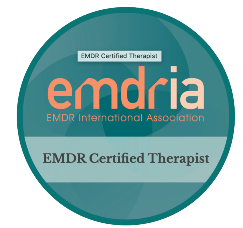Grounded: Exercises in trauma therapy.
Seeking therapy for a traumatic experience can be scary and intimidating for some, and for others it is the hope for immediate, long awaited relief. For the therapist, part of the job is determining when it is most appropriate to begin to deeply address the trauma in counseling and implementing the right techniques to allow for this to happen.
Traumatic memories are often stored in conjunction with the emotions and sensations that accompanied the initial traumatic experience. As a result, addressing those events too early in therapy can result in further trauma as the sensory experiences are accessed in the process of working on the event. Depending on the nature of the experience, the complexity of the background and the supportive resources available to the client, there could be work that needs to be done in the counseling prior to addressing the underlying trauma so as not to make problems worse.
Qualified trauma therapists will take time assessing readiness first. They will spend time helping you to develop tools to create stability when you feel unstable. It is important to be able to self soothe and have some means to regulate heightened emotions, prior to delving into the highly charged emotions related to the difficult memory, particularly in the case of multiple traumas or traumatic childhoods. The tools that are taught are often called grounding exercises.
One of the well known grounding exercises that many therapists, including myself, teach is progressive muscle relaxation. This exercise involves tensing and relaxing muscle groups, starting with the toes, and progressively moving up the body through the legs, torso, arms and head. Doing so involves mindfulness and awareness of the present moment, coupled with focus on the body, ultimately releasing tension.
Another exercise that is effective for grounding is just noticing the sensory aspects in the room around you, in the current moment. What colors do you see? What do you smell? Do you feel your feet planted on the floor and the chair beneath you in which you sit? Do you hear anything? As you progress through each sensory aspect of your surroundings, you become more mindful and focused on the present moment, reducing stress and tension and providing some relief to potentially heightened anxiety or emotions. It is difficult for our brains to remain focused on a traumatic past experience while at the same time focusing on sensory aspects in the present moment. Having tools to reduce heightened states of anxiety or emotion are imperative to successfully working through traumatic memories.
As clients develop confidence in themselves and trust in the therapist, it becomes much more effective to begin to look more closely at the trauma experience and draw on resources as needed during the trauma work. Whether you are a client who is anxious to delve into your tough memories, or are one who is avoidant of them, finding a trauma therapist who is experienced at measuring the pace and timing of the trauma work, while helping you to develop the tools to prepare you for it, are important keys to getting the most out of your treatment.





